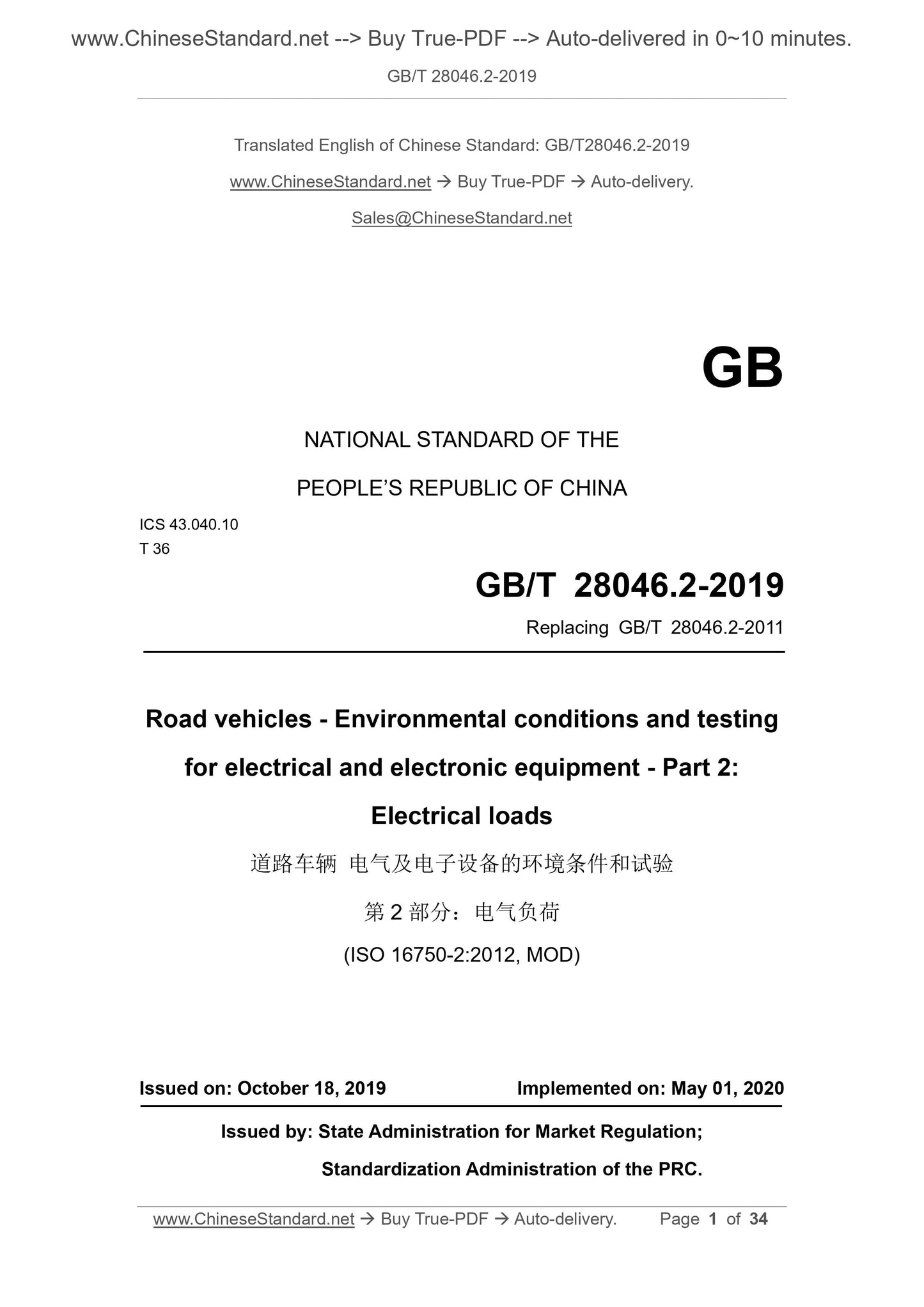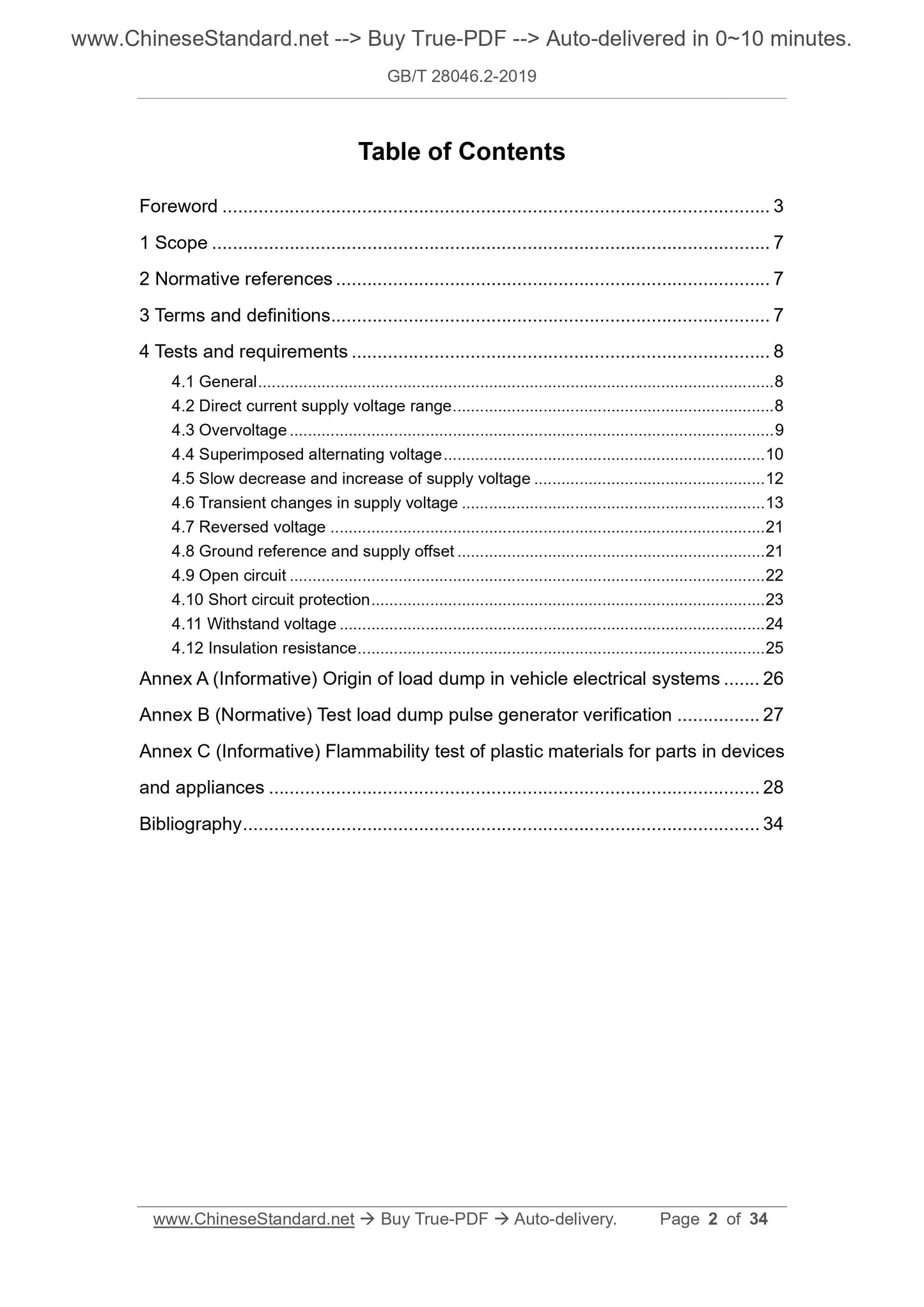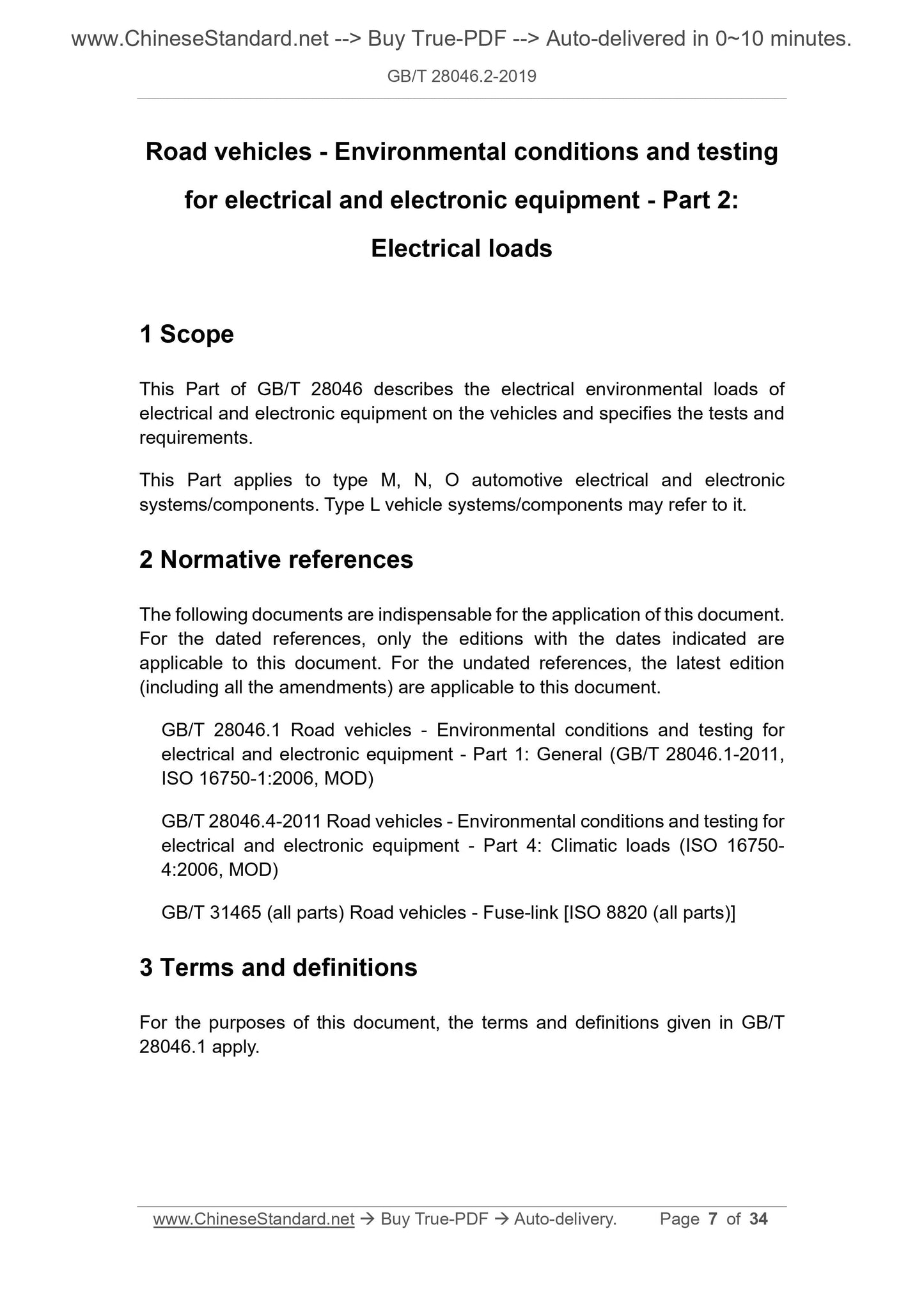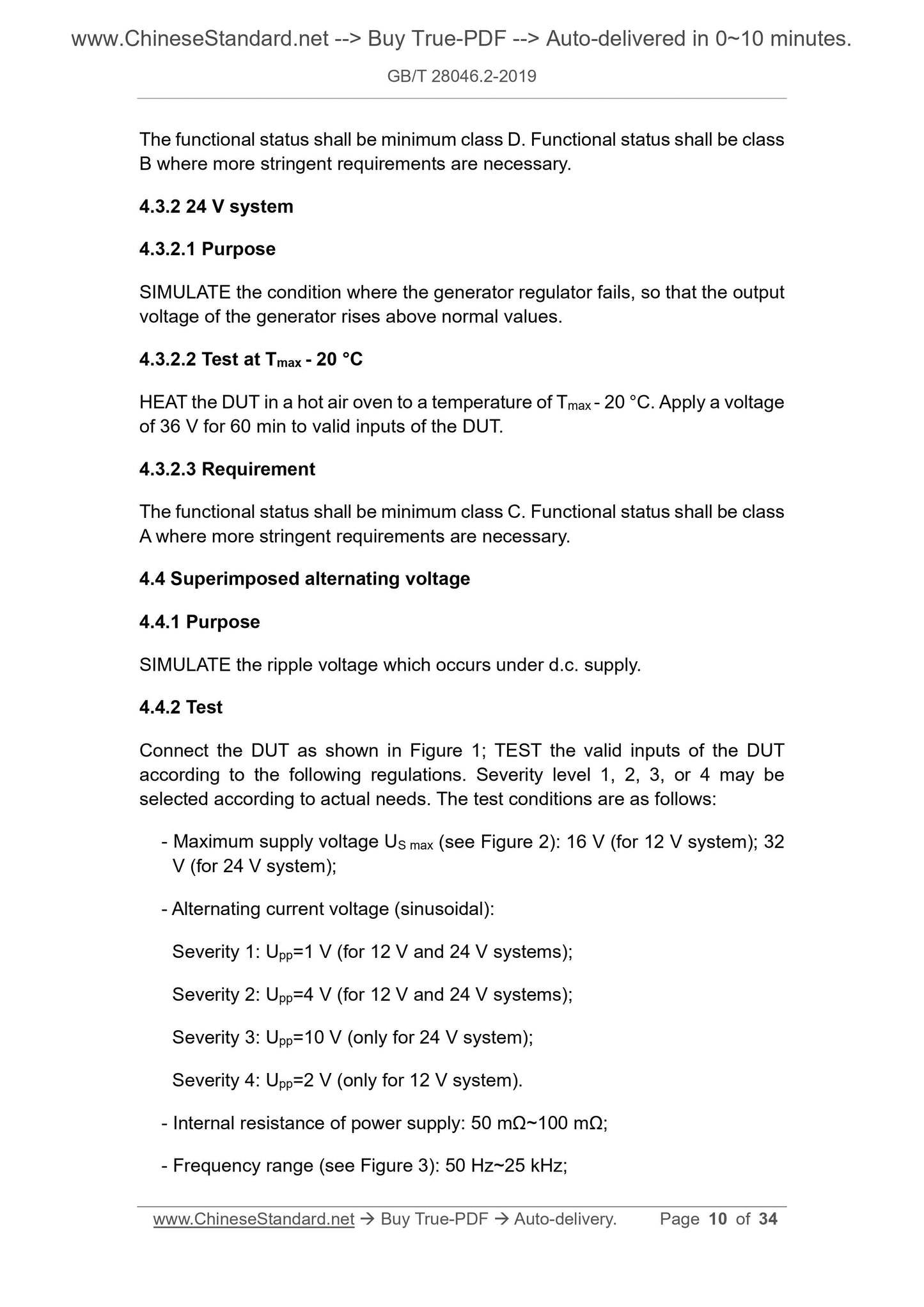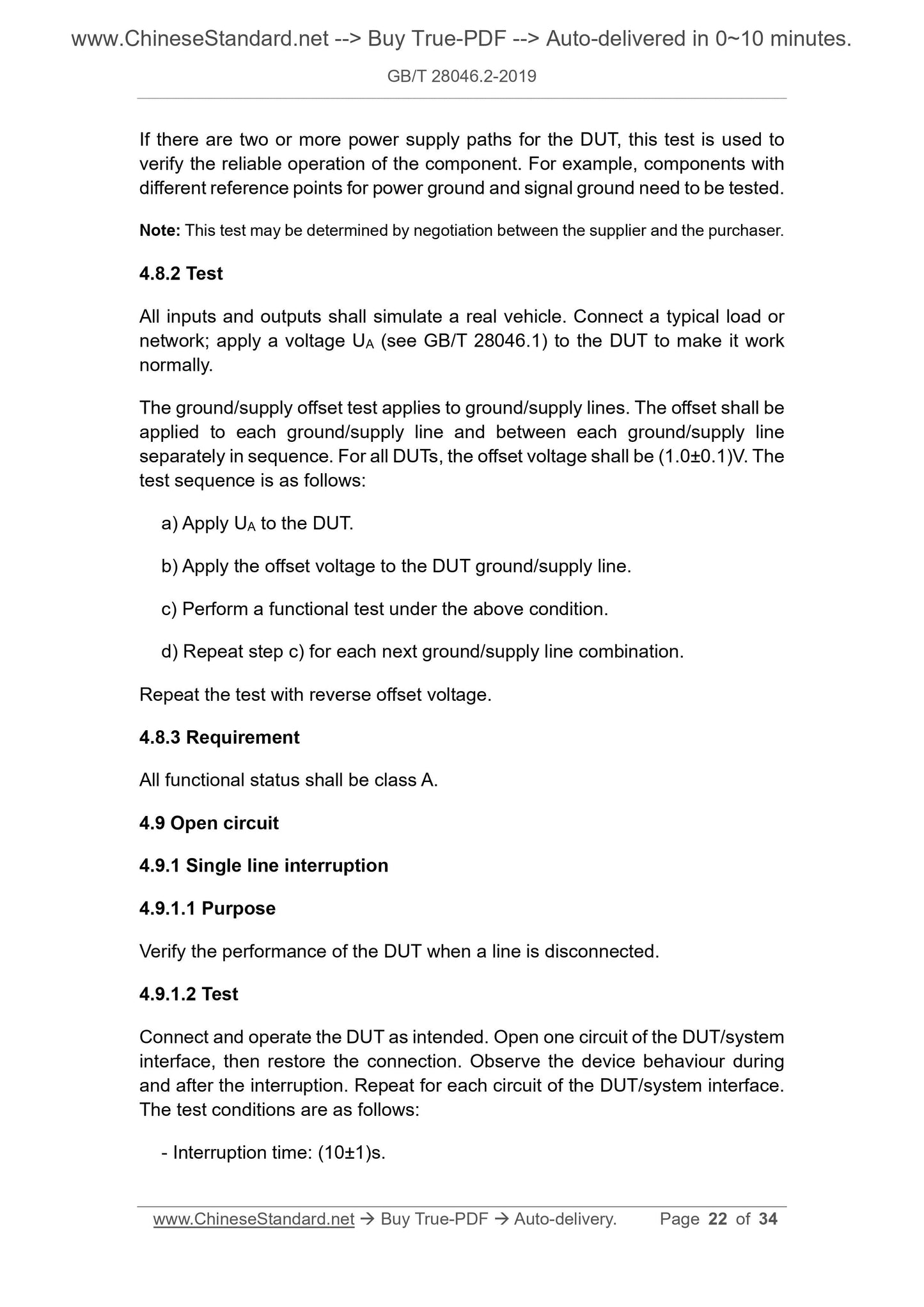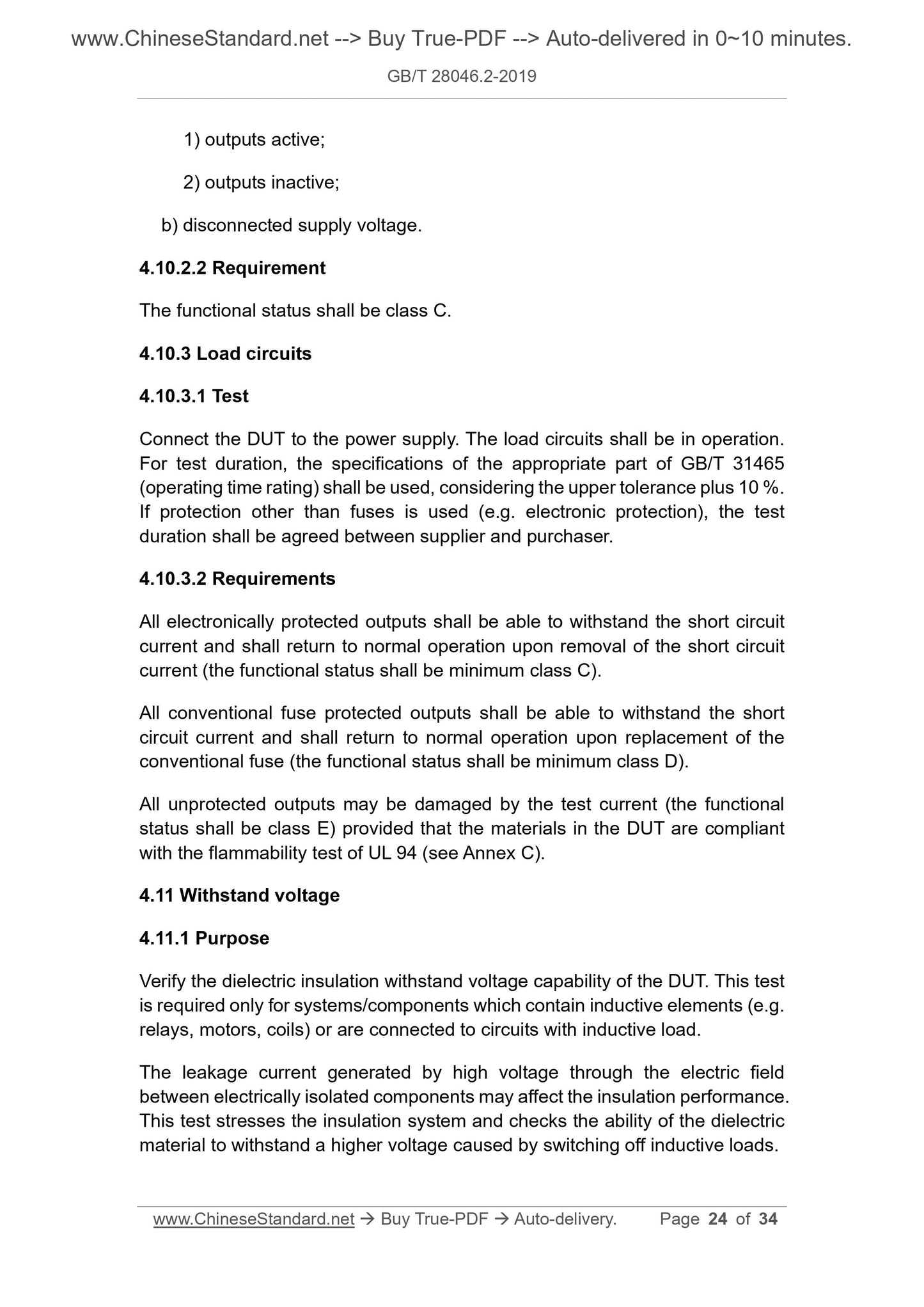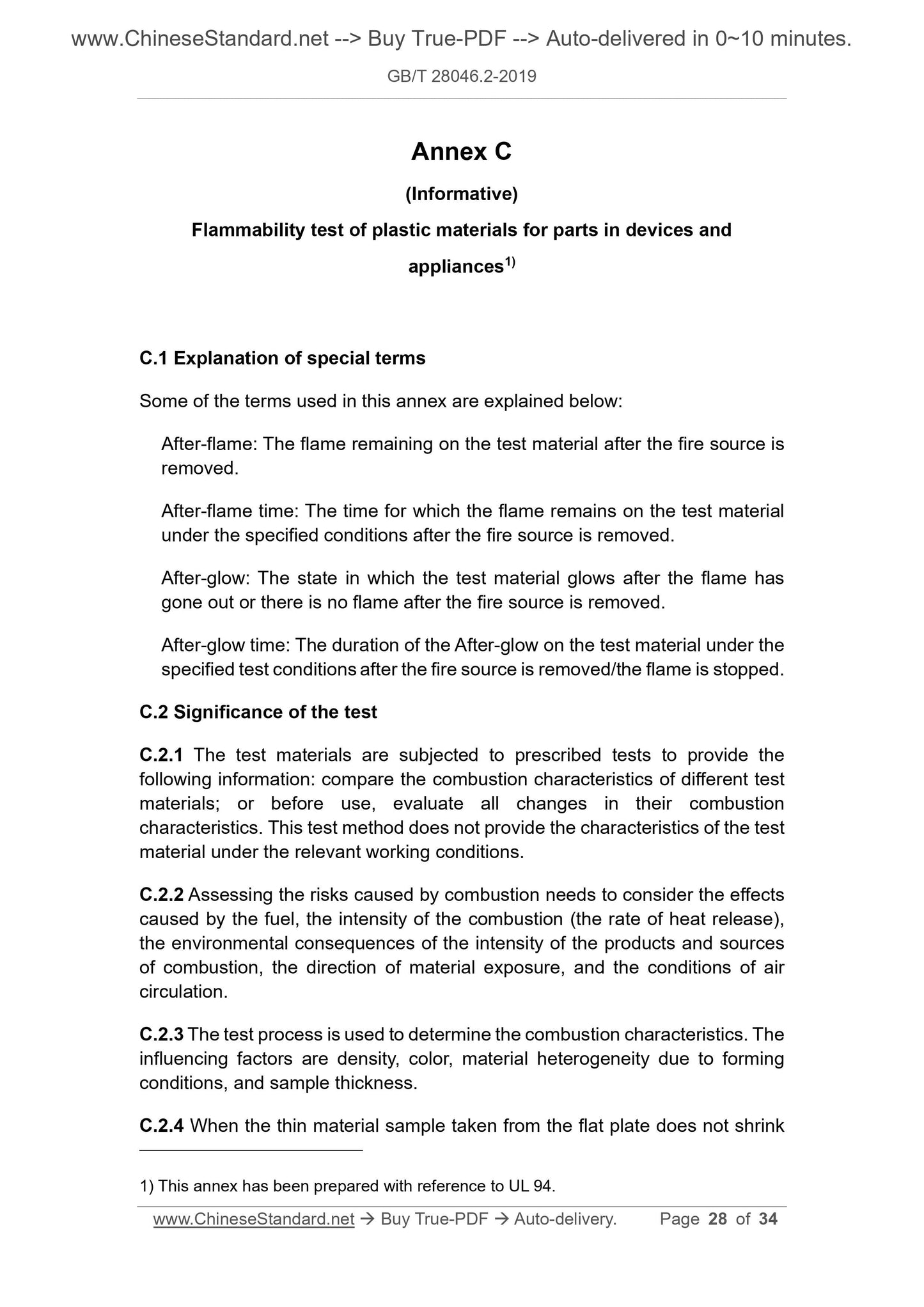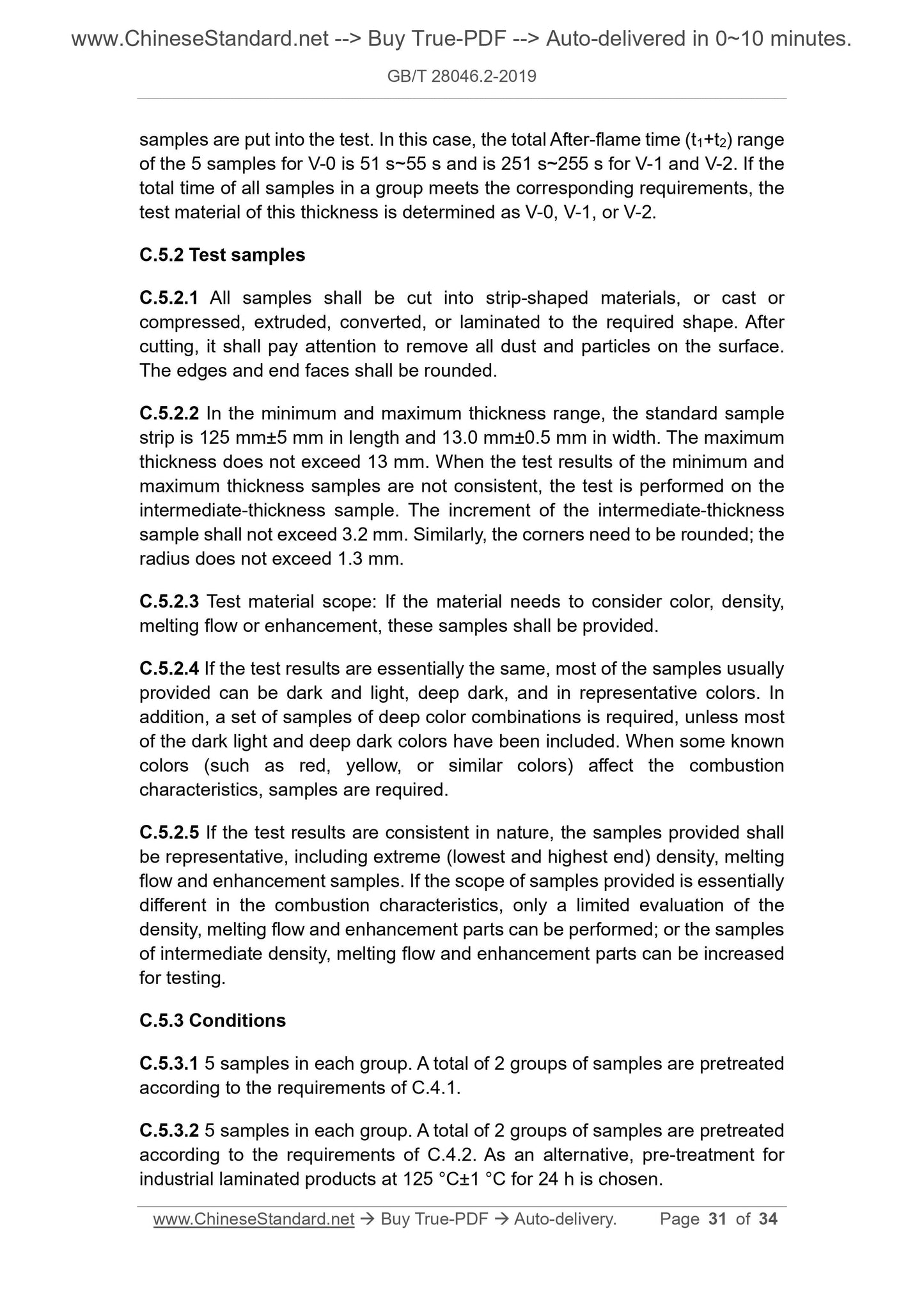1
/
of
8
www.ChineseStandard.us -- Field Test Asia Pte. Ltd.
GB/T 28046.2-2019 English PDF (GB/T28046.2-2019)
GB/T 28046.2-2019 English PDF (GB/T28046.2-2019)
Regular price
$255.00
Regular price
Sale price
$255.00
Unit price
/
per
Shipping calculated at checkout.
Couldn't load pickup availability
GB/T 28046.2-2019: Road vehicles -- Environmental conditions and testing for electrical and electronic equipment -- Part 2: Electrical loads
Delivery: 9 seconds. Download (and Email) true-PDF + Invoice.Get Quotation: Click GB/T 28046.2-2019 (Self-service in 1-minute)
Newer / historical versions: GB/T 28046.2-2019
Preview True-PDF
Scope
This Part of GB/T 28046 describes the electrical environmental loads ofelectrical and electronic equipment on the vehicles and specifies the tests and
requirements.
Basic Data
| Standard ID | GB/T 28046.2-2019 (GB/T28046.2-2019) |
| Description (Translated English) | Road vehicles -- Environmental conditions and testing for electrical and electronic equipment -- Part 2: Electrical loads |
| Sector / Industry | National Standard (Recommended) |
| Classification of Chinese Standard | T36 |
| Classification of International Standard | 43.040.10 |
| Word Count Estimation | 26,282 |
| Date of Issue | 2019-10-18 |
| Date of Implementation | 2020-05-01 |
| Issuing agency(ies) | State Administration for Market Regulation, China National Standardization Administration |
Share
